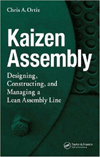
An M-1iA delta-style robot uses an integrated vision system to accurately insert a flexible filter strip into a plastic cuvette molding. Photo courtesy David Wickham, Jon Oliver Communication Ltd.
Carclo is molding a multishape cuvette that weighs only 5 grams and cannot be assembled manually. For this reason, Carclo uses a small six-axis robot, the M-1iA, to insert the filter strip. FANUC Robotics UK supplied the robot.
The M-1iA is a delta-style robot. It was integrated into Carclo’s by automation specialist Hi-Tech Automation, which is a FANUC strategic partner for plastics applications. The robot has a 0.5-kilogram payload.
Assembly is done within a stand-alone workcell. Cuvette moldings are manually loaded and unloaded to an indexing turntable. In front of the cuvette moldings is a camera that measures the position and size of the filter and sends this data, along with the filter strip specification, to a feed roller and cutter.
Filter strips that don’t meet specification are cut as needed before being delivered to the robot. To complete the assembly, the robot lifts and inserts the filter into the cuvette molding.
Control of the entire workcell is done through the FANUC R-30iA controller, which has integrated functions such as iRVision, robot link and collision protection. The camera is used with iRVision, which allows the robot to effectively adapt its grip to the filter strip.

Plastic cuvette moldings are assembled within a stand-alone work cell that is very compact. Photo courtesy David Wickham, Jon Oliver Communication Ltd.
As production ramps up, Carclo hopes to make the process leaner by integrating the assembly cell with a robotic molding cell. When the robot is integrated, the camera will be located within the robot’s body above the wrist.
“We now use six-axis robots rather than Cartesian unloaders because they are much more flexible and cost effective,” says Alan Hogan, manufacturing engineer at Carclo Technical Plastics. “Hi-Tech has come up with some innovative solutions to our needs, including the operator pendant which makes resetting the arm a simple task.”
At another area in the Mitcham facility, an M-10ia robot demolds a plastic component similar to the cuvette, while two LR Mate robots pack the component into trays. LR Mate robots are six-axis, tabletop units that offer dexterity and high speed.
For more information on six-axis delta robots, call 800-477-6268 or visit www.fanucrobotics.com.







